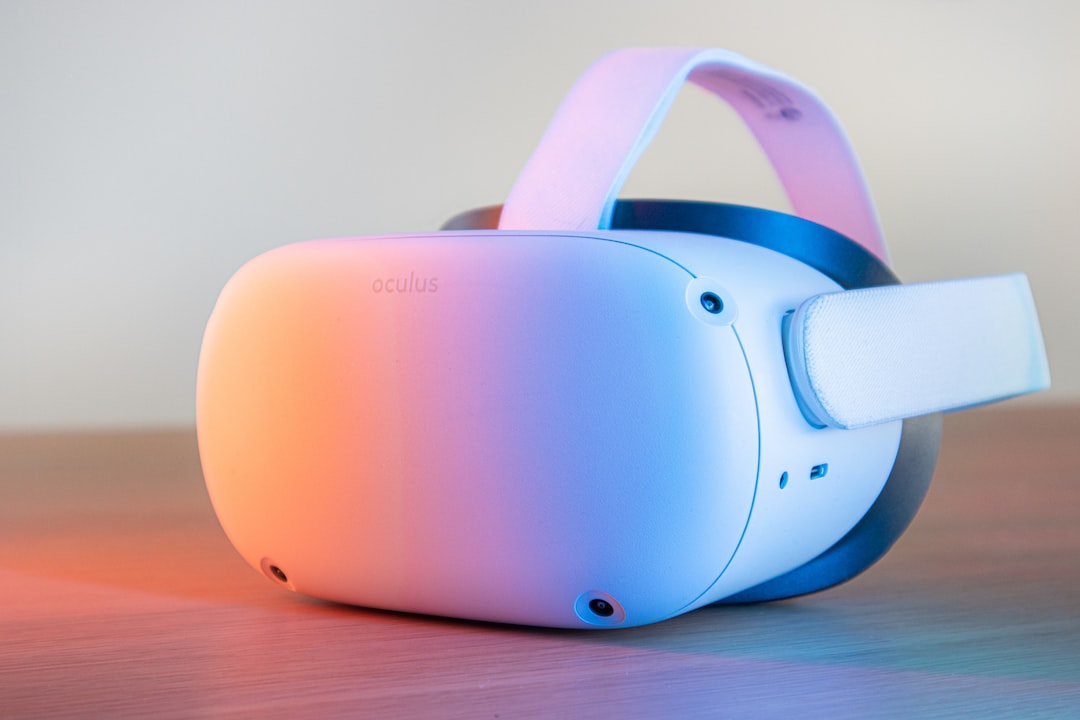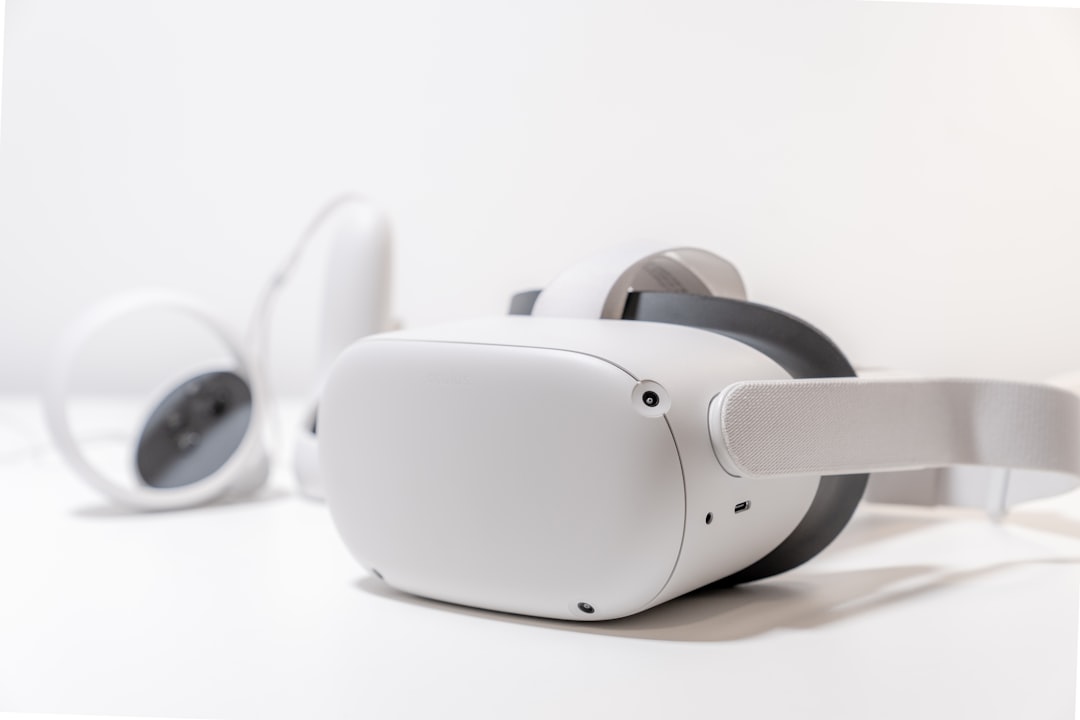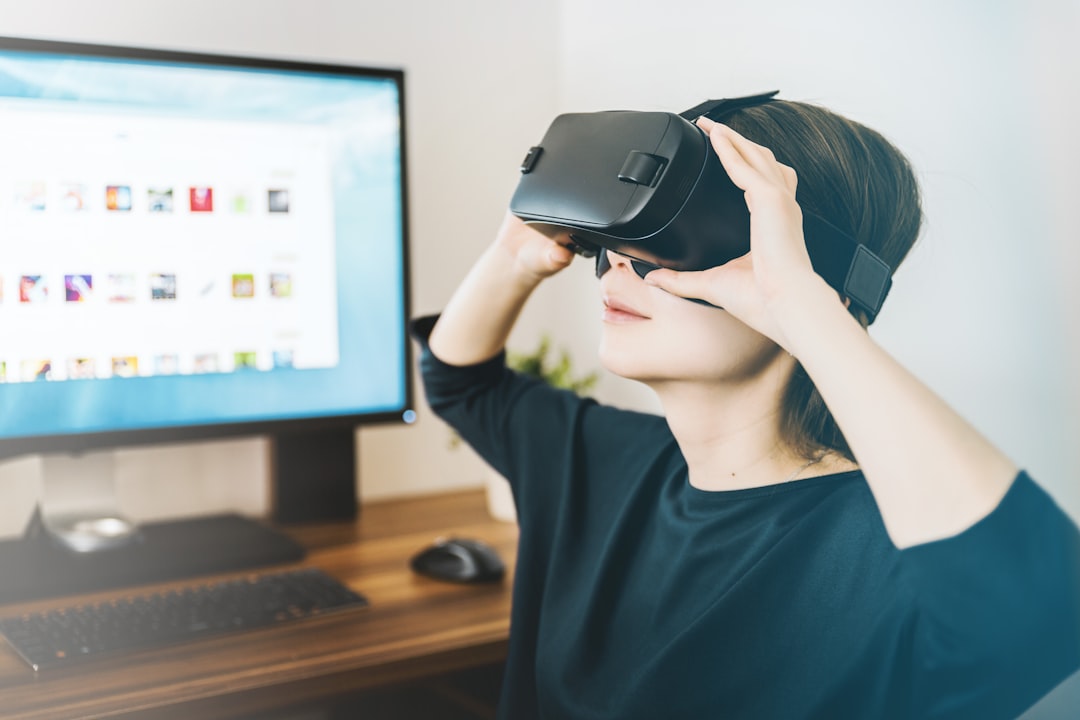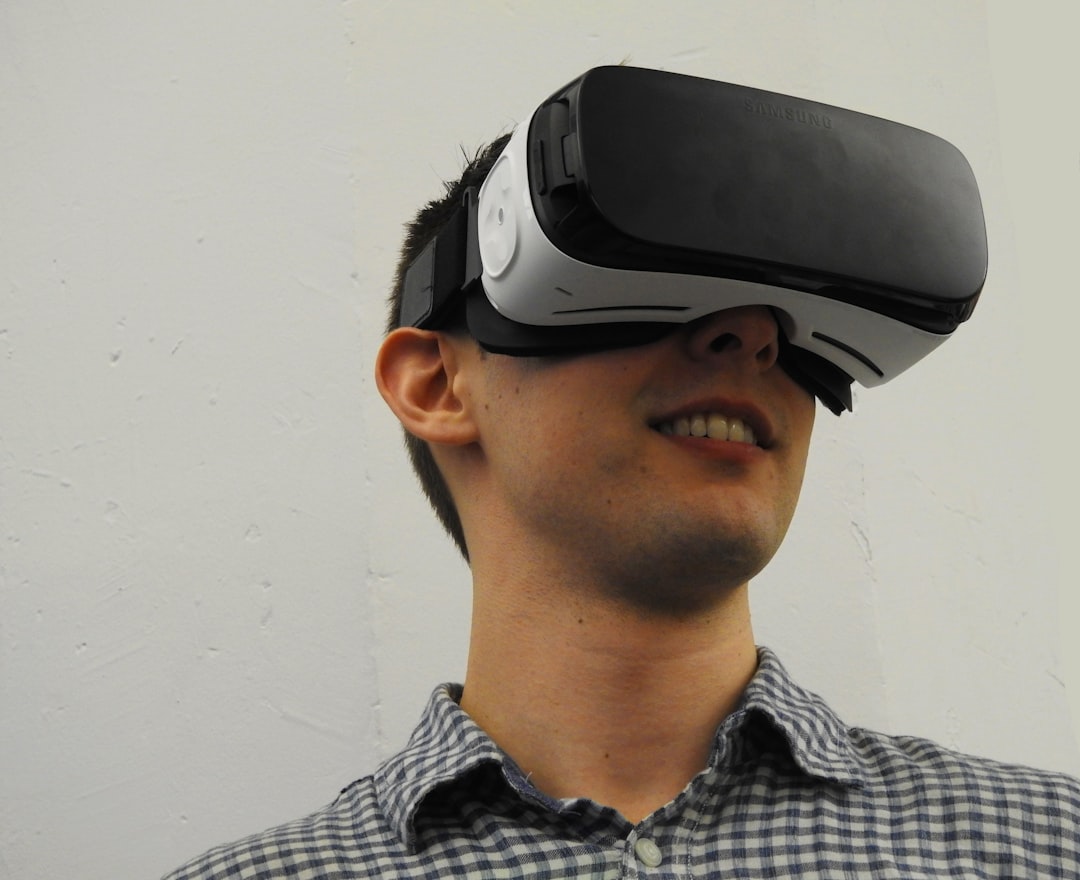With the rise of remote work and the increasing need for global teams, traditional meetings are becoming more and more limited in their effectiveness. Time zones, geographic distance, and communication barriers can all hinder collaboration and innovation, leading to missed opportunities and decreased productivity.
Enter virtual reality meetings. With VR, teams can come together in a shared digital space, no matter where they are in the world. This technology not only enhances communication and collaboration but also boosts engagement and creativity.
As businesses strive to stay competitive in a rapidly changing world, the need for innovative workplace solutions becomes more pressing. VR meetings represent a cutting-edge solution to the age-old problem of collaboration, allowing teams to work together seamlessly and effectively, no matter where they are.
By embracing VR technology, businesses can set themselves apart as forward-thinking and adaptable, attracting top talent and staying ahead of the curve. The benefits of VR meetings are clear, and the potential for growth and innovation is unlimited.
As we move into the future of work, it’s clear that VR meetings will become an increasingly important part of how we collaborate and innovate. The possibilities are endless, and the rewards are substantial for those who are willing to take the leap into the world of virtual reality.
The Current Limitations of Traditional Meetings: Time, Distance and Communication Barriers
In today’s fast-paced business world, traditional meetings can be a major obstacle to effective collaboration. Time constraints, physical distance, and communication barriers often make it difficult for team members to come together and collaborate effectively. Whether it’s due to scheduling conflicts, travel expenses, or simply the inconvenience of coordinating multiple schedules, traditional meetings can be more trouble than they’re worth.
One of the biggest challenges of traditional meetings is the issue of time. With busy work schedules and conflicting priorities, it can be difficult to find a time that works for everyone to meet in person. This can lead to delays in projects and missed opportunities for collaboration. Additionally, traditional meetings often require travel, which can be both time-consuming and costly.
Distance can also be a major issue in traditional meetings. With team members often spread across multiple locations, it can be difficult to bring everyone together in one place. Even when everyone is in the same physical location, communication barriers can still arise. Different work styles, language barriers, and other factors can make it difficult for team members to effectively communicate and collaborate with one another.
Fortunately, virtual reality (VR) technology offers a solution to many of these challenges. By enabling team members to meet and collaborate in a virtual environment, VR can help to overcome the limitations of time, distance, and communication barriers. With VR, team members can come together from anywhere in the world, in real-time, without the need for travel.
Moreover, VR can enhance communication and collaboration by providing a more immersive and engaging experience than traditional meetings. With VR, team members can interact with each other in a way that feels more natural and intuitive, as if they were in the same physical space. This can lead to more productive and effective collaboration, as team members can more easily share ideas, brainstorm solutions, and work together towards a common goal.
Overall, the limitations of traditional meetings can be a major obstacle to effective collaboration in the workplace. However, by leveraging the power of VR technology, organizations can overcome these challenges and take their collaboration efforts to the next level. In the next section, we’ll explore the benefits of VR meetings and how they can enhance communication, collaboration, and engagement.
Moreover, VR can enhance communication and collaboration by providing a more immersive and engaging experience than traditional meetings.
The Benefits of Virtual Reality Meetings: Enhancing Communication, Collaboration and Engagement
As we’ve discussed, traditional meetings are often limited by time, distance, and communication barriers. But what if there was a way to break down those limitations? That’s where virtual reality comes in.
Virtual reality (VR) meetings have the potential to revolutionize workplace collaboration by enhancing communication, collaboration, and engagement. Here’s how:
Enhanced Communication: In a VR meeting, participants can communicate just as they would in a face-to-face meeting. However, VR technology allows for additional communication channels, such as the ability to use hand gestures, facial expressions, and body language. This can enhance the overall communication experience and help participants better understand each other’s ideas and perspectives.
Improved Collaboration: VR meetings can also improve collaboration by providing participants with a virtual space where they can work together on a project or task. For example, in a VR meeting, participants can work together on a virtual whiteboard or collaborate on a 3D model. This can help teams work more efficiently and effectively, even if they are in different locations.
Increased Engagement: One of the biggest benefits of VR meetings is that they can increase engagement among participants. Because VR creates a highly immersive environment, participants are more likely to stay engaged and focused throughout the meeting. Additionally, VR meetings can be more interactive and dynamic, which can make them more enjoyable and memorable.
In short, virtual reality meetings have the potential to transform workplace collaboration by breaking down traditional limitations and enhancing communication, collaboration, and engagement. But what exactly does VR technology look like, and how is it advancing? We’ll explore those topics in our next section.
But what exactly does VR technology look like, and how is it advancing?
Advancements in VR Technology: From Headsets to Holograms
The world of virtual reality (VR) is constantly evolving, and with the advancements in technology, we are now able to experience more realistic and immersive environments than ever before. From simple headsets that allow us to see and interact with 3D objects, to more advanced hologram technology that can create a fully interactive virtual world, the possibilities are endless.
One of the most significant advancements in VR technology has been the development of motion tracking sensors, which allow us to move and interact with objects in a virtual space. These sensors are often integrated into headsets, such as the popular Oculus Rift and HTC Vive, and enable users to fully immerse themselves in a virtual environment and interact with it in a natural and intuitive way.
Another exciting development in VR technology is the creation of holographic displays. These displays use advanced projection techniques to create lifelike 3D objects that can be viewed from any angle, without the need for a headset. Imagine being able to collaborate with colleagues from around the world in a fully interactive virtual environment, where you can see and interact with holographic models of your latest products, designs, or ideas.
With the rise of cloud computing and the increasing availability of high-speed internet, it’s becoming easier and more affordable than ever to access VR technology. This means that even small startups and independent creators can benefit from the collaborative power of VR, without having to invest in expensive hardware or software.
As technology continues to evolve, we can expect to see even more exciting advancements in the world of VR, including the integration of AI and machine learning, which will enable more personalized and intelligent interactions in virtual environments.
In short, VR technology is transforming the way we collaborate and work together, enabling us to break down barriers of time and distance and create truly immersive and engaging experiences. From simple headset technology to advanced holographic displays, the future of VR is bright, and the possibilities are endless. The only limit is our imagination. Are you ready to join the VR revolution?
Imagine being able to collaborate with colleagues from around the world in a fully interactive virtual environment, where you can see and interact with holographic models of your latest products, designs, or ideas.
Real-Life Examples of VR Meetings in Action: From Global Corporations to Small Startups
Virtual reality meetings are not just a concept, they are a reality. Companies across the world have already begun to adopt this innovative technology to enhance collaboration, communication, and engagement amongst their teams. From global corporations to small startups, the benefits of VR meetings are becoming increasingly evident.
Take for example, Ford Motor Company. They have been utilizing VR technology to allow designers and engineers to collaborate on vehicle designs. With the use of VR headsets, they are able to view and manipulate 3D models of cars as if they were physical prototypes. This has led to a significant reduction in time and cost spent on physical prototyping, improving efficiency and productivity amongst their teams.
Another example is the global financial services firm, Citigroup. They have implemented VR technology to provide immersive training experiences for their employees. This allows them to simulate high-pressure scenarios, such as a cyberattack, and prepare their employees to respond effectively. This has not only increased engagement and retention amongst their employees, but has also improved their ability to handle real-life situations.
Even small startups are reaping the benefits of VR meetings. The virtual reality startup, AltspaceVR, has created a platform for remote teams to collaborate as if they were in the same room together. This has enabled them to expand their talent pool beyond their geographical location, and has fostered a strong sense of team unity and collaboration.
Overall, these real-life examples demonstrate the versatility and adaptability of VR technology in various industries and company sizes. As more companies begin to adopt this technology, the possibilities for virtual collaboration are endless.
This has not only increased engagement and retention amongst their employees, but has also improved their ability to handle real-life situations.
The Future of Workplace Collaboration: VR as the New Norm?
As we’ve explored in the previous sections, virtual reality meetings are already transforming the way we collaborate in the workplace. But what does the future hold? Will VR become the new norm for workplace communication and collaboration?
The answer is a resounding yes. As VR technology continues to advance and become more accessible, we can expect to see an increasing number of companies adopting VR as a primary tool for collaboration. In fact, many experts predict that within the next few years, VR meetings will become as common as conference calls and email.
One of the key advantages of VR meetings is their ability to break down geographical barriers. With VR, participants can feel as though they are in the same room, regardless of where they are located in the world. This is a game-changer for companies with global teams or remote workers, as it allows for more frequent, productive meetings without the cost and time constraints of travel.
Another advantage of VR meetings is their ability to enhance communication and collaboration. With features such as virtual whiteboards and shared workspaces, participants can work together in real-time and brainstorm ideas as if they were in the same room. This not only increases efficiency, but also fosters a sense of teamwork and camaraderie among team members.
As VR technology continues to evolve, we can also expect to see more advanced features such as haptic feedback and full-body avatars, which will further enhance the immersive experience of VR meetings.
Of course, as with any new technology, there will be challenges to overcome. One of the biggest hurdles will be ensuring that VR meetings are inclusive and accessible to all participants, regardless of their physical abilities or technical expertise.
However, as companies increasingly recognize the benefits of VR meetings and invest in the necessary infrastructure and training, we can expect to see a more widespread adoption of this technology in the workplace. And as we enter a new era of remote work and global collaboration, VR meetings will undoubtedly play a crucial role in shaping the future of workplace communication and collaboration.
This not only increases efficiency, but also fosters a sense of teamwork and camaraderie among team members.
Conclusion: The Promise of VR Meetings for the Next Generation of Workers
As we prepare for the next generation of workers, it’s clear that the modern workplace will require innovative solutions for collaboration and communication. Virtual Reality (VR) meetings offer a promising solution to the limitations of traditional meetings and provide a platform for enhanced communication, collaboration, and engagement.
With the advancements in VR technology, from headsets to holograms, we can now simulate real-life meetings with people from all corners of the world. This means that we can overcome the limitations of time, distance, and communication barriers that have traditionally hindered workplace collaboration. We can bring diverse teams together, no matter where they are located on the globe, and work more efficiently and effectively than ever before.
Real-life examples of VR meetings in action, from global corporations to small startups, demonstrate the value of this innovative technology. These companies have seen significant improvements in productivity, team morale, and overall success. VR meetings have enabled them to tap into the potential of their employees and leverage their collective expertise to drive business growth.
Looking to the future, it’s clear that VR meetings could become the new norm for workplace collaboration. As more companies adopt this technology, we can expect to see increased efficiency, better communication, and a boost in creativity and innovation. The next generation of workers will expect nothing less.
In conclusion, VR meetings offer a promising solution to the limitations of traditional meetings and provide a platform for enhanced communication, collaboration, and engagement. With the advancements in VR technology, we can expect to see even more benefits in the future. As we move forward into a new era of work, we must embrace innovation and adapt to the changing landscape. VR meetings are just one example of how we can do that. Let’s embrace this opportunity and see what the future holds!





